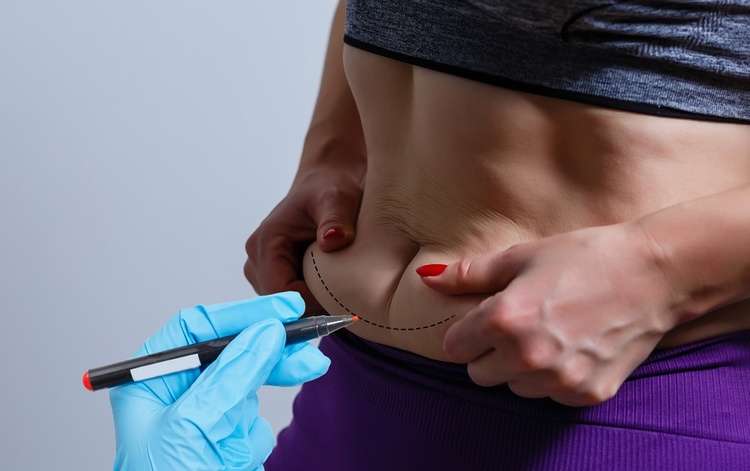Belly Fat Reduction — What you should know
Belly fat is more than just a cosmetic concern; it can significantly impact your health and self-confidence. Located around the abdominal area, excess fat cells can contribute to various health conditions including heart disease, type 2 diabetes, and metabolic syndrome. For many individuals, despite dedicated efforts with diet and exercise, stubborn belly fat remains resistant to change. This has led to an increasing interest in both surgical and non-surgical fat removal options designed specifically to target the abdominal area.

What Are Belly Fat Removal Surgery Options?
Surgical interventions for belly fat removal have advanced significantly in recent years, offering effective solutions for those who haven’t achieved desired results through lifestyle changes alone. The most common surgical options include:
-
Liposuction: This procedure involves the surgical removal of fat deposits using a cannula (a thin tube) and suction. Traditional liposuction requires general anesthesia and involves a recovery period of several weeks. Modern variations like tumescent liposuction use local anesthesia and fluid injection to reduce bleeding and facilitate fat removal.
-
Tummy Tuck (Abdominoplasty): More comprehensive than liposuction, a tummy tuck removes excess fat and skin while tightening weakened or separated abdominal muscles. This procedure is particularly beneficial for individuals with significant skin laxity after weight loss or pregnancy.
-
Laser-Assisted Liposuction: Technologies like SmartLipo use laser energy to liquefy fat before removal, potentially resulting in less trauma and faster recovery compared to traditional liposuction.
Surgical options generally provide more dramatic and immediate results but require longer recovery times and carry risks associated with any surgical procedure, including infection, scarring, and anesthesia complications.
Exploring Non-Surgical Belly Fat Removal Techniques
For those seeking less invasive approaches, several non-surgical belly fat reduction methods have gained popularity:
-
CoolSculpting (Cryolipolysis): This FDA-approved procedure uses controlled cooling to freeze and eliminate fat cells without damaging surrounding tissue. The treated fat cells crystallize, then gradually die and are naturally eliminated by the body. Results typically appear over 1-3 months.
-
SculpSure (Laser Lipolysis): This treatment uses laser energy to heat and destroy fat cells beneath the skin’s surface. The damaged fat cells are then naturally processed and removed by the body’s lymphatic system over several weeks.
-
Radiofrequency Treatments: Devices like Vanquish and TruSculpt use radiofrequency energy to heat fat cells to a point of destruction without harming the skin. These treatments also offer the benefit of skin tightening.
-
Ultrasound Fat Reduction: Systems like UltraShape use pulsed, focused ultrasound to mechanically disrupt fat cell membranes without affecting surrounding tissues.
Non-surgical options typically require multiple sessions and produce more gradual results compared to surgery. However, they offer significant advantages: minimal or no downtime, fewer risks, and typically lower costs per session.
Understanding Liposuction and Tummy Tuck Procedures
Before considering either liposuction or a tummy tuck, it’s crucial to understand what each procedure entails, their differences, and what they can realistically achieve:
Liposuction:
-
Primarily removes fat deposits from specific areas
-
Does not significantly address skin laxity
-
Best for patients with good skin elasticity and localized fat deposits
-
Typically performed as an outpatient procedure
-
Recovery time ranges from a few days to two weeks
-
Results are visible once post-operative swelling subsides
Tummy Tuck:
-
Removes excess skin and fat
-
Repairs weakened or separated muscles (diastasis recti)
-
More extensive surgery requiring general anesthesia
-
Involves a horizontal incision between the hip bones
-
Recovery period of 2-6 weeks
-
Results in a flatter, firmer abdominal contour
Both procedures are intended for body contouring rather than significant weight loss. Ideal candidates are those at or near their target weight with stubborn fat deposits or excess skin that hasn’t responded to diet and exercise.
Costs and Provider Comparison for Belly Fat Removal Options
| Procedure | Average Cost Range | Recovery Time | Results Timeline |
|---|---|---|---|
| Liposuction | $3,500 - $8,000 | 1-2 weeks | Immediate (after swelling subsides) |
| Tummy Tuck | $6,000 - $12,000 | 2-6 weeks | Immediate with continued improvement |
| CoolSculpting | $2,000 - $4,000 (for full treatment) | None | 1-3 months |
| SculpSure | $1,500 - $3,000 (for full treatment) | None | 6-12 weeks |
| Radiofrequency Treatments | $1,500 - $3,000 (multiple sessions) | None | 1-3 months |
Prices, rates, or cost estimates mentioned in this article are based on the latest available information but may change over time. Independent research is advised before making financial decisions.
Safety Considerations and Realistic Expectations
When considering any belly fat removal procedure, safety should be your top priority. Surgical options carry risks including infection, adverse reactions to anesthesia, blood clots, and uneven contours. Non-surgical treatments generally have fewer risks but may cause temporary redness, swelling, or discomfort.
Realistic expectations are essential for satisfaction with your results. Remember:
-
Neither surgical nor non-surgical treatments are weight-loss solutions
-
Results vary depending on your body type, age, skin elasticity, and lifestyle
-
Maintaining results requires commitment to a healthy diet and regular exercise
-
Multiple treatments may be necessary for optimal results with non-surgical options
-
Some procedures address fat removal while others target both fat and excess skin
The best candidates for any belly fat reduction procedure are those who have reached a stable, healthy weight and have specific areas of concern that haven’t responded to traditional weight-loss methods.
This article is for informational purposes only and should not be considered medical advice. Please consult a qualified healthcare professional for personalized guidance and treatment.




